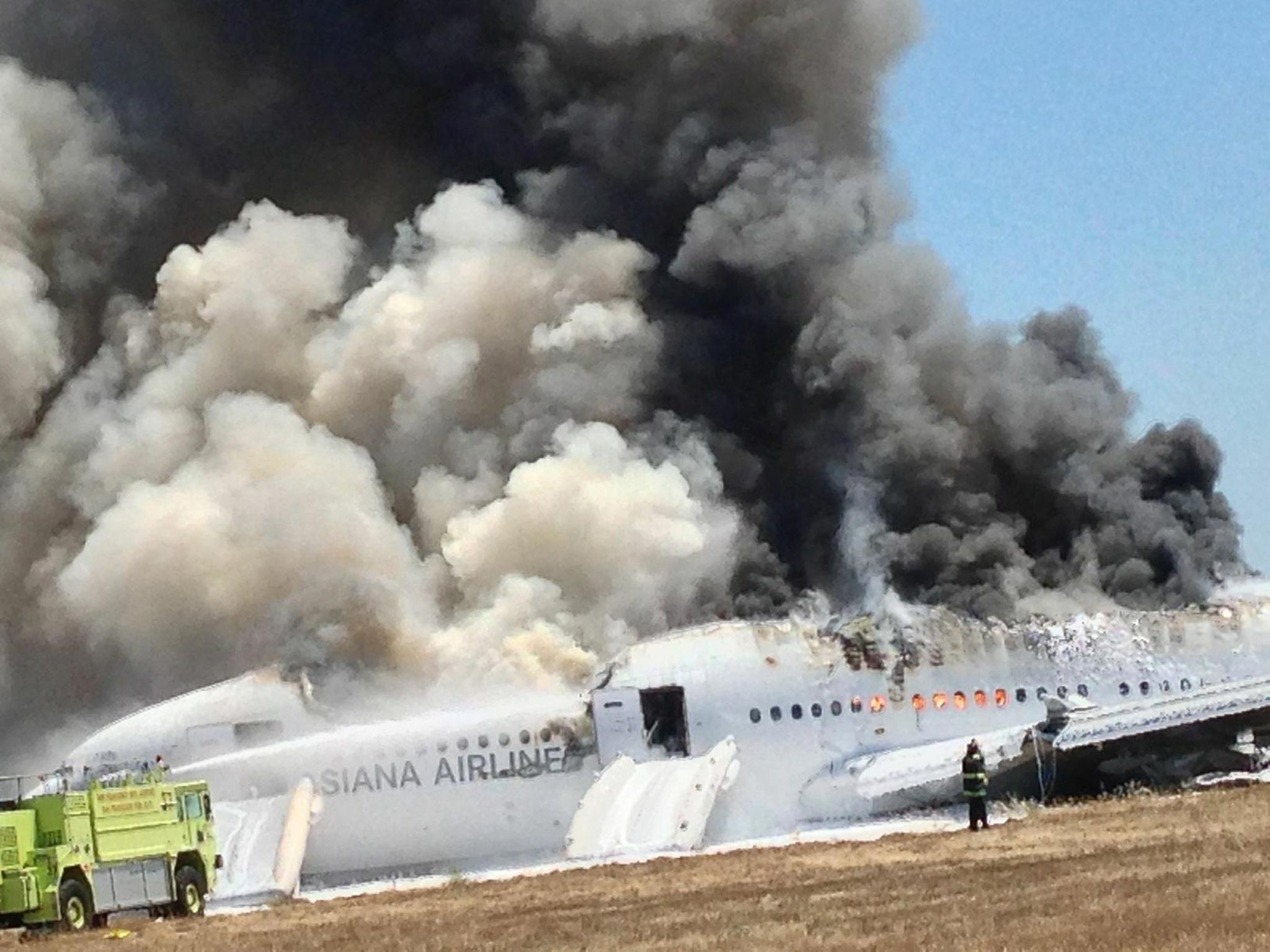Asiana Airlines flight attendants were thrown on to San Francisco runway in crash
Audio recordings show pilots tried to correct the plane's speed and elevation seconds before hitting the seawall at the end of the runway

Your support helps us to tell the story
From reproductive rights to climate change to Big Tech, The Independent is on the ground when the story is developing. Whether it's investigating the financials of Elon Musk's pro-Trump PAC or producing our latest documentary, 'The A Word', which shines a light on the American women fighting for reproductive rights, we know how important it is to parse out the facts from the messaging.
At such a critical moment in US history, we need reporters on the ground. Your donation allows us to keep sending journalists to speak to both sides of the story.
The Independent is trusted by Americans across the entire political spectrum. And unlike many other quality news outlets, we choose not to lock Americans out of our reporting and analysis with paywalls. We believe quality journalism should be available to everyone, paid for by those who can afford it.
Your support makes all the difference.Two flight attendants in the back of Asiana Airlines Flight 214, which crashed on Saturday at San Francisco airport, survived despite being thrown onto the runway when the plane slammed into a seawall.
"Two flight attendants were ejected from the aircraft during the impact sequence so they were not at their stations when the aircraft came to rest," the National Transportation Safety Board chairwoman Deborah Hersman told a news conference.
"They were found down the runway and off to the side of the runway," she added. "Those flight attendants survived, but they obviously had gone through a serious event and have injuries."
Hersman also said that the pilots told investigators they were relying on automated cockpit equipment to control their speed during final approach, which prompts questions about whether a mistake was made in programming the auto pilot or if the equipment had malfunctioned.
The South Korean airline's plane crashed when it came in too low and slow for landing. Hersman said the pilot at the controls was only about halfway through his training on the Boeing 777 and was landing that type of aircraft at the San Francisco airport for the first time ever. And the co-pilot was on his first trip as a flight instructor.
As the plane approached, the pilot was cleared to land, but about 30 seconds before the impact, the instructor realised the plane was coming in too low. He told the pilot to pull up but realised the automated throttle was not maintaining the correct speed of 137 knots.
The pilot tried to increase speed about eight seconds before the crash, and two seconds before attempted to abort the landing but by then it was too late. The plane's landing gear hit a sea wall, followed by the tail, which was ripped off the plane.
Two teenage Chinese girls were killed in the crash but 305 others survived, most with little or no physical injuries. The girls have been identified as Ye Mengyuan and Wang Linjia. Investigators are trying to establish whether one of the girls killed had managed to leave the plane after the crash, only to be hit by a rescue vehicle.
Audio recordings show pilots tried to correct the plane's speed and elevation only seconds before hitting the seawall at the end of the runway, an impact that sent the fuselage bouncing and skidding across the airfield.
The plane's airspeed has emerged as a key question mark in the investigation. All aircraft have minimum safe flying speeds that must be maintained or pilots risk a stall, which robs a plane of the lift it needs to stay airborne. Below those speeds, planes become unmaneuverable.
Hersman said that the South Korean pilots were not tested for drugs or alcohol after the crash, because they do not fall under US regulations.
Join our commenting forum
Join thought-provoking conversations, follow other Independent readers and see their replies
Comments